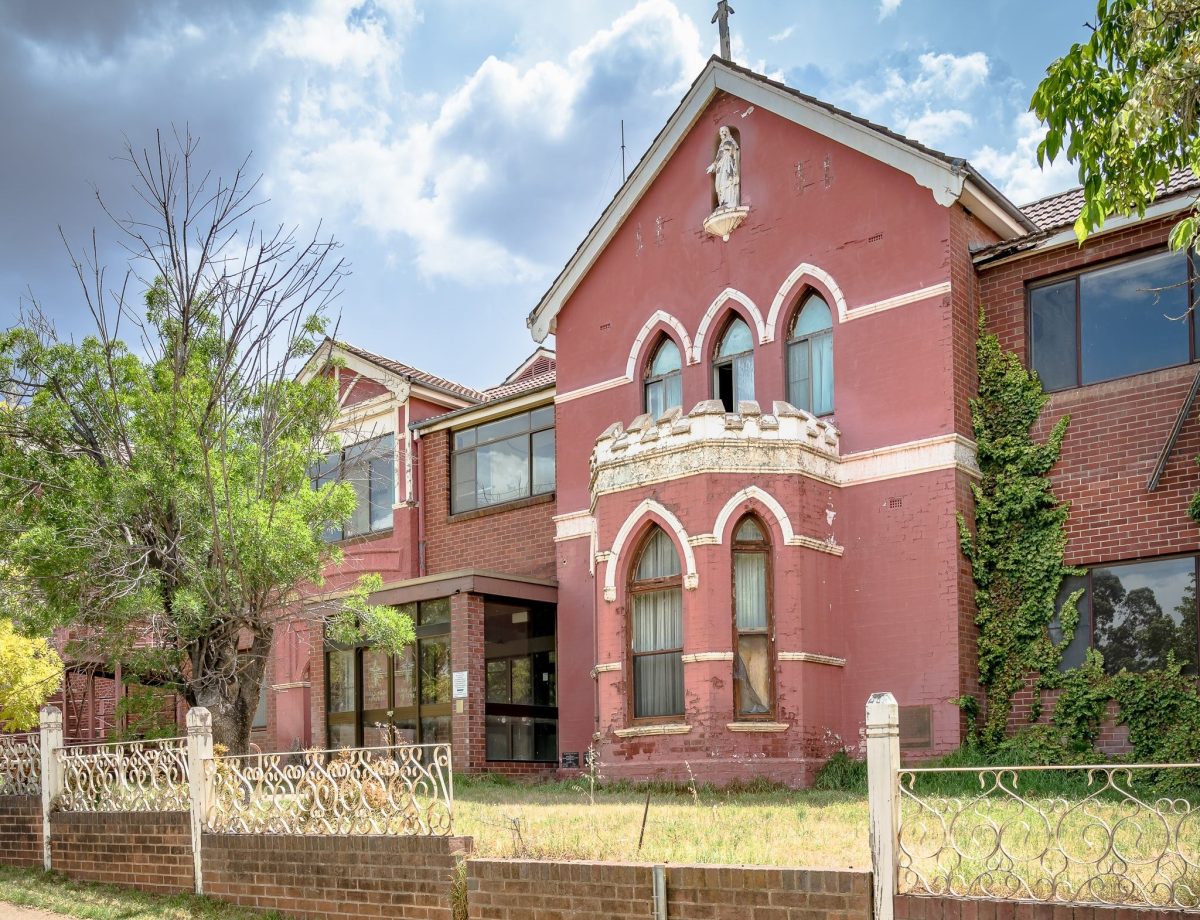
The construction site is located on the grounds of the historic Sacred Heart Hospital and Convent – the first Catholic hospital in country NSW, established in 1911 by Reverend Father Jerome Hennessy, who came to the town in 1889. Photo: Supplied.
Forensic testing is now underway following the discovery of human bones at a construction site in the Hilltops town of Young earlier this month.
According to NSW Police, the bones were first unearthed by a construction crew at a Bruce Street site on Monday, 9 December and upon further examination by police, additional bones were found.
They say early indications suggest the remains are old, though their exact origins and age remain unknown. The remains will undergo forensic testing, but officials caution that the process will take time, and no specific timeline has been provided.
Police have also stated that the circumstances surrounding the discovery are not being treated as suspicious.
The construction site, however, is located on the vast grounds of the historic Sacred Heart Hospital and Convent – the first Catholic hospital in country NSW – established in 1911 by Reverend Monsignor Jerome Hennessy, who came to the town in 1889.
The site includes a convent, cloisters and a chapel, all of which served as vital parts of the Catholic mission in the region, having been taken over by the Sisters of Mercy in 1914.
It expanded significantly with a maternity unit and new nurses’ quarters added in 1935, a new nurses’ home opening in 1960, and further additions to the renamed Mercy Hospital, which was completed in 1964 and 1968.
However, the hospital closed its doors in 2004, and the site has since been sold three times.
Before the hospital was established, the area was part of the late 19th-century settlement expansion that followed Young’s transformation from a gold rush town into a thriving agricultural community.
Records from that time are sparse, but the land may have been used for residential or farming purposes. It also sits uphill from the town’s original courthouse and jail and police barracks established during early settlement.
Additionally, the region is culturally and spiritually significant to the Wiradjuri people, the traditional custodians of the land.







